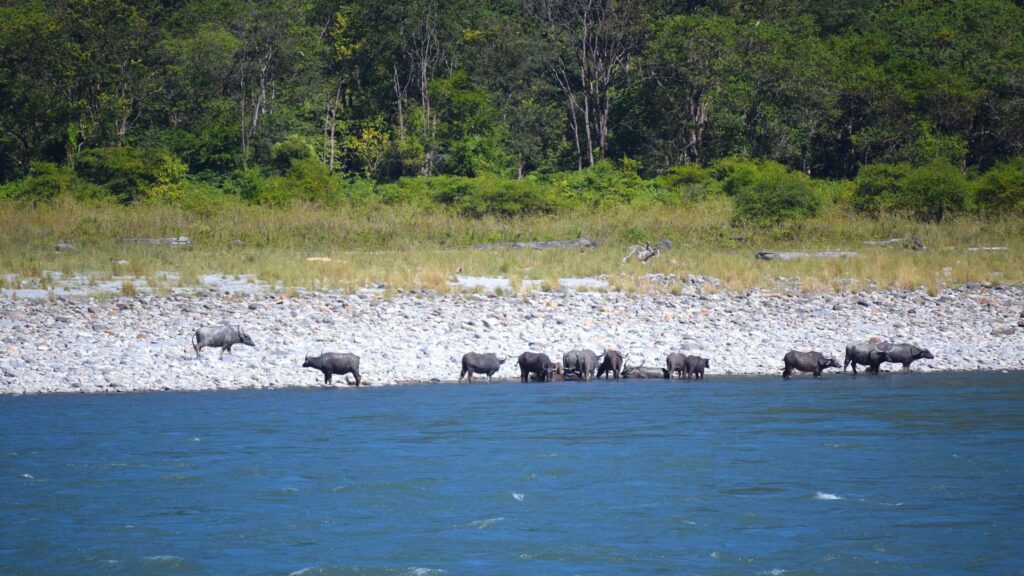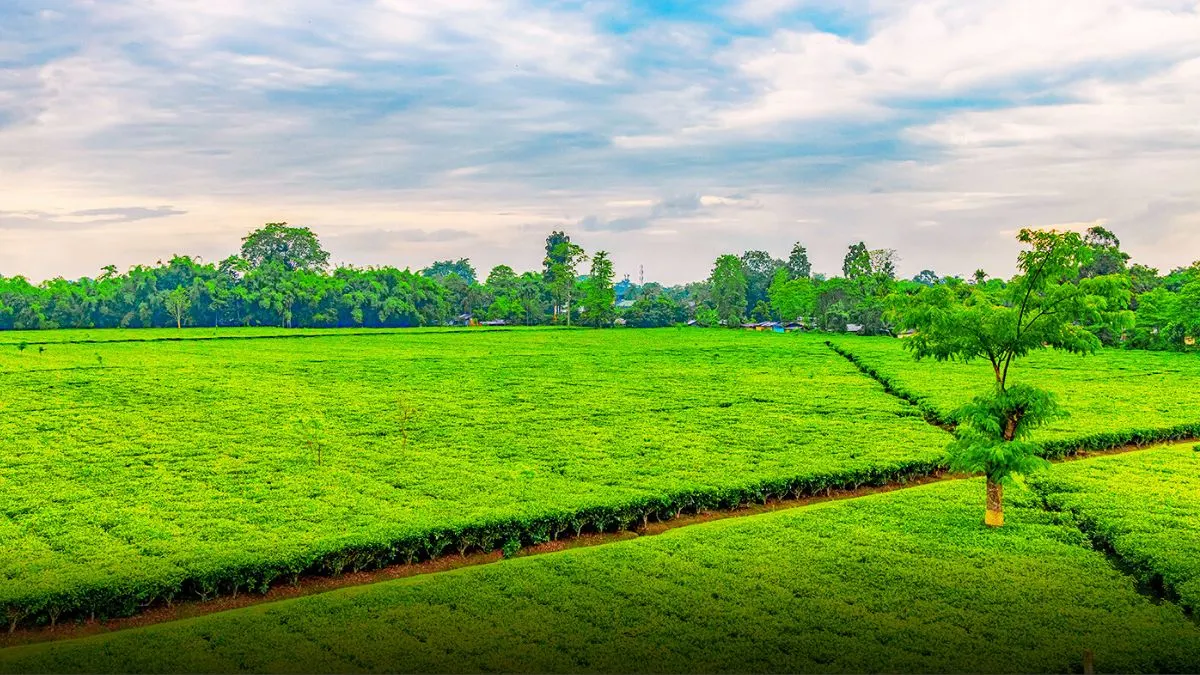Introduction to Manas National Park: An Ecological Gem of Assam
Nestled in the foothills of the Eastern Himalayas, Manas National Park is a UNESCO World Heritage Site renowned for its biodiversity and ecological importance. Spanning about 500 square kilometers, the park is home to a variety of endangered species, including the last population of pygmy hogs. Its recovery from political unrest highlights the park’s importance in biodiversity conservation. Located on the Indo-Bhutan border, Manas National Park offers a unique sanctuary that thrives thanks to both international cooperation and effective conservation measures.
Manas National Park’s Geographical Significance
Manas National Park lies in the Chirang and Baksa Districts in Assam, India, within the Bodoland Territorial Region (BTR). It is strategically positioned at the foothills of the Eastern Himalayas and borders Bhutan’s Royal Manas National Park, forming a transboundary conservation area. This geographical location is essential to the park’s biodiversity, featuring a range of ecosystems, from grasslands to forested hills. The Manas River, which flows through the park, plays a crucial role in shaping its habitats and providing natural wildlife corridors that facilitate species movement across both India and Bhutan.
A Historical Look at Manas National Park’s Protection Status
The history of Manas National Park dates back to 1928 when it was officially designated as the Manas Wildlife Sanctuary. Before this, it had been a hunting reserve for royal families. In 1985, UNESCO recognized the park as a World Heritage Site due to its exceptional biodiversity. However, political unrest in the 1990s led to severe declines in wildlife populations. The park was placed on the UNESCO World Heritage in Danger list in 1992, but through persistent restoration efforts, it was removed from this list in 2011.
Habitat Diversity and Ecological Significance
Manas National Park is renowned for its diverse habitats, ranging from subtropical forests to grasslands and riverine ecosystems. This habitat diversity allows the park to support a vast array of species. The ecological gradient within the park varies from tropical monsoon forests at lower elevations to cold broadleaved forests higher up, creating distinct ecological communities. These varying habitats make Manas a living laboratory for studying tropical ecosystems and their interconnections.

The Role of the Manas River in Ecological Balance
The Manas River is central to the park’s ecology. Originating in Bhutan, the river flows through the park, shaping its riparian ecosystems. Seasonal flooding creates temporary wetlands that serve as breeding grounds for fish and amphibians. This vital water source also supports several endangered species, including the Bengal Florican and various ungulates, which thrive in the riverine grasslands. The river’s dynamic ecosystem helps maintain the park’s overall ecological health.
The Recovery Story: From Danger to Triumph
Manas National Park’s journey from UNESCO World Heritage in Danger to a thriving sanctuary is one of the most remarkable stories in conservation. In the 1990s, political instability caused a significant decline in wildlife numbers. However, after years of conservation efforts, such as anti-poaching measures, species reintroductions, and habitat restoration, the park began to recover. The reintroduction of the Indian one-horned rhinoceros under the Indian Rhino Vision 2020 program marked a significant milestone in these efforts. By 2011, seven rhinos had been successfully reintroduced, signaling the start of wildlife recovery.
Flora Diversity: An Overlooked Ecological Treasure
Flora diversity in Manas National Park is another area of ecological importance. The park is home to over 500 plant species, with a variety of trees and shrubs that form the foundation of the forest ecosystem. The vegetation structure includes emergent canopy trees, shrubs, and ground flora, each playing a role in maintaining ecological balance. The park’s forests contribute to crucial services such as carbon sequestration, climate regulation, and watershed protection.
Endangered Wildlife in Manas National Park
Manas National Park is a critical habitat for some of the world’s most endangered species. The park is home to the only known wild population of pygmy hogs, one of the rarest mammals globally. Efforts to reintroduce species such as the Indian one-horned rhinoceros and Bengal tigers have been successful, with their numbers gradually increasing. The golden langur, Assam roofed turtle, and the hispid hare are other notable species found in the park, highlighting the biodiversity importance of this region.
Avian Diversity: A Haven for Birds
The avian diversity of Manas National Park is truly remarkable, with over 450 bird species recorded. This variety is reflective of the park’s diverse habitats, which provide critical breeding grounds and wintering habitats for migratory birds. Endangered species like the Bengal Florican rely on the park’s grasslands for survival, while other birds, such as the Scarlet Minivet, thrive in the park’s forests. The park is a vital stop for migratory birds traveling along the Central Asian Flyway, making it an important site for avian conservation.
Conservation Challenges and Future Directions
While Manas National Park has seen significant recovery, it still faces challenges such as habitat fragmentation, poaching, and illegal logging. The park’s transboundary conservation efforts with Bhutan and community-based conservation initiatives have helped mitigate these issues. Moving forward, climate change and human-wildlife conflict remain significant concerns. Continued monitoring, adaptive management strategies, and innovative conservation approaches are essential to protect the park’s rich biodiversity.
A Model for Conservation Success
Manas National Park is an example of how dedicated conservation efforts can lead to the recovery of even the most endangered ecosystems. Its diverse habitats, rich wildlife, and international conservation collaboration make it a model for global efforts to preserve biodiversity. The park’s future will depend on continued vigilance, community involvement, and adaptive management strategies to ensure it remains a sanctuary for generations to come.
Final Thoughts
Manas National Park is not only a vital conservation area but also a symbol of hope for biodiversity preservation. From its UNESCO World Heritage status to its ongoing recovery efforts, this park shows us that with dedication and cooperation, ecosystems can be restored. If you’re a wildlife enthusiast or a traveler, visiting Manas is an opportunity to witness nature’s resilience and contribute to its future protection.










The website design looks great—clean, user-friendly, and visually appealing! It definitely has the potential to attract more visitors. Maybe adding even more engaging content (like interactive posts, videos, or expert insights) could take it to the next level. Keep up the good work!
The website design looks great—clean, user-friendly, and visually appealing! It definitely has the potential to attract more visitors. Maybe adding even more engaging content (like interactive posts, videos, or expert insights) could take it to the next level. Keep up the good work!